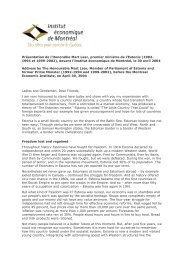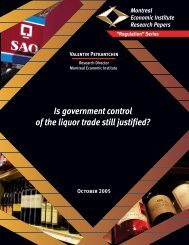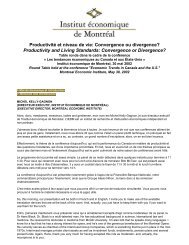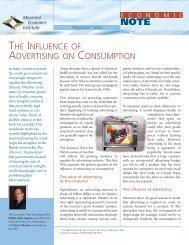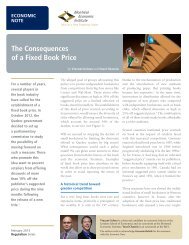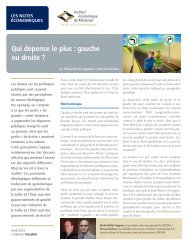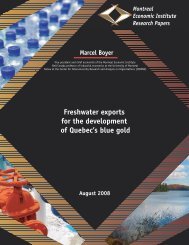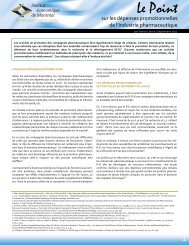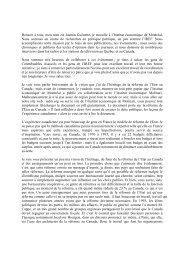Union certification: Developing a level playing field ... - LabourWatch
Union certification: Developing a level playing field ... - LabourWatch
Union certification: Developing a level playing field ... - LabourWatch
Create successful ePaper yourself
Turn your PDF publications into a flip-book with our unique Google optimized e-Paper software.
<strong>Union</strong> <strong>certification</strong>: <strong>Developing</strong> a <strong>level</strong> <strong>playing</strong> <strong>field</strong> for labour relations in Quebecon non-union employee representation dependon the perspective or the “frame of reference” thatis used to evaluate them. The authors identifyfour different perspectives that represent thedifferent dimensions or realities of non-unionemployee representation.The first perspective is an evolutionary one,in which non-union employee representationschemes are considered as a mere step in theevolution of employee-employer relations. Thisimplies that non-union employee representationis considered as “an unstable form of voice” thatwill be supplanted by genuine industrialdemocracy.The second and more positive perspective isto consider non-union forms of employeerepresentation as means to unify the interests ofboth employees and employers. Proponents ofthis method of regarding non-union employeerepresentation believe that, in contrast to unionsthat generally foster a confrontational relationshipbetween management and employees, nonunionemployee representation encouragescooperation and the pursuit of commoninterests. Non-union employee representationoffers a venue for promoting employee involvementand empowerment while providing aforum to build outcomes providing mutual gain.The third perspective is to consider nonunionemployee representation as a way to hinderand limit union introduction in the work place.Proponents of unions consider non-unionemployee representation as a way for employersto succeed in blocking <strong>certification</strong> attempts.Indeed, many cases were identified whereemployers suggested non-union employeerepresentation in reaction to union drives. Ofcourse, union avoidance is an important criterionwhen management considers adopting a nonunionform of employee representation in theirorganization, but empirical evidence seems tosuggest that it is not the only reason, since nonunionemployee representation has been implementedin organizations where the threat ofunion <strong>certification</strong> was low.The fourth way of considering non-unionemployee representation is to view it as acomplement to trade unionism and not asubstitute. This idea of complementarity hasbeen observed in Europe, where work councilshandle plant-<strong>level</strong> issues while trade unionstackle industry-wide matters.This last perspective can help us understandwhy non-union employee representation coversonly a small percentage of workers in Canada andthe U.S. Indeed, for non-union forms ofemployee representation and unions both toflourish, it is necessary for policy-makers toadopt a legislative framework that “promotes theoptimal mix of the two forms of voice”. 9 Andsince this type of legislation is unlikely to beadopted in either country in the short or evenmedium term, the future of non-union employeerepresentation in North America remainsuncertain.Also, even though non-union employeerepresentation would avoid some of the flaws ofunions, they are not perfect. Here are some of themain problems: “Most forms of non-unionrepresentation are ‘management dominated’. [...]NER generally lack independence frommanagement and real-decision making power:they consult rather than bargain.” 10 Also, suchprograms are often “merely management’sattempt to gain knowledge possessed by workersin order to increase productivity, reduce workrules, and in general, gain concessions fromunions without sharing decision making.” 11Furthermore, in a study regarding systems ofcollective employee representation in non-unionfirms in the U.K., the author states that, in many9. Id., p. 533.10. Mark Harcourt and Helen Lam, op. cit., note 1, p. 336.11. Id.Montreal Economic Institute25



